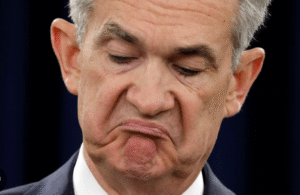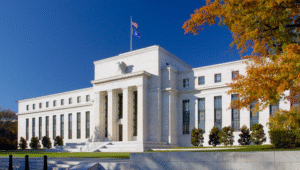$EEM $BND $VWO $EMB
#emergingmarkets #nolanding #stockmarket #bonds #yieldcurve #globalfinance #economicgrowth #inflation #interestrates #marketvolatility #investmentstrategy #financialanalysis
As the phrase “the long end keeps on rising” suggests, we are witnessing an interesting yet complex phase in the global financial markets, particularly in the context of bond yields and the implications for emerging markets in a scenario where a hard landing is avoided, often referred to as a no-landing scenario. This phenomenon, where long-term interest rates continue to climb, signals various underlying economic dynamics, including investor expectations about inflation, growth prospects, and policy responses from central banks. In this detailed analysis, we delve into how these factors interplay and affect emerging markets, which are often seen as vital indicators of global economic health and investor sentiment.
In a no-landing scenario, where the economy neither enters a recession nor experiences rampant inflation leading to a soft landing, emerging markets find themselves in a peculiar position. On the one hand, the continuous rise in long-end yields in developed markets, particularly in the United States, increases the cost of borrowing for emerging economies. Most emerging markets are dependent on external financing for growth and development. As U.S. Treasury yields rise, investors often demand higher returns on emerging market bonds, leading to capital outflows and currency depreciation in these regions. However, this trend also reflects investors’ confidence in the resilience of the global economy, albeit skewed more towards developed economies.
Furthermore, the dynamics between the long end of the yield curve rising and the scenarios playing out in emerging markets are not one-dimensional. Higher yields in developed markets can lead to a reallocation of global capital, moving from riskier assets in emerging markets to the perceived safety of developed market bonds. This shift can exacerbate economic vulnerabilities in emerging economies, particularly those with high debt levels or those reliant on foreign investment for their current account deficits. Conversely, a continued rise in the long end, if driven by growth optimism rather than inflation fears, can also signal strengthening global demand. Such demand could benefit commodity-exporting emerging economies by boosting trade revenues, thereby partially offsetting the negative impacts of higher borrowing costs.
Analyzing the investor perspective in this scenario, the allure of higher yields in developed markets might seem irresistible initially. However, discerning investors could find value in emerging market assets if they believe these economies can navigate the challenges of higher borrowing costs and capital outflows. Diversified emerging market bonds and equities might offer attractive returns, especially for those investors with a higher risk tolerance and a longer investment horizon. Moreover, some emerging economies with robust fundamentals, such as manageable debt levels and strong external balances, might be better positioned to weather the storm.
In conclusion, the ongoing rise in the long end poses both challenges and opportunities for emerging markets. The bifurcation in the global economy, characterized by strong growth prospects in developed economies versus heightened vulnerabilities in emerging ones, requires nuanced analysis. Investors must consider the broader macroeconomic context, including the paths of inflation and interest rate policies, the stability of global financial conditions, and the resilience of individual emerging economies. While immediate headwinds persist, the underlying growth fundamentals and potential for market corrections could present strategic opportunities for long-term investors.











Comments are closed.